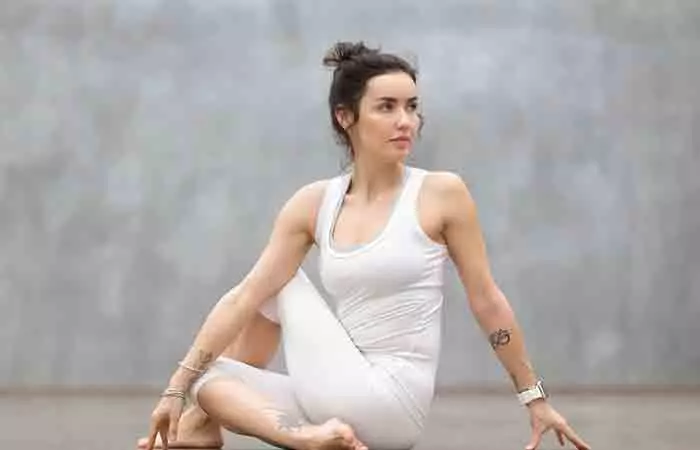Here, we will be discussing the benefits of paschimottanasana. You have landed in the right place. This apparently straightforward asana is a basic hatha yoga stance with numerous advantages. The Paschimottanasana is beneficial for various body systems and high blood pressure and diabetes. This yoga asana provides an excellent stretch to the entire body. Surprisingly, the East is referred to as the front of the body, while the West refers to the back. This asana is named on the rear of the body. This yoga asana is also known as the Seated Forward Bend or the Intense Dorsal Stretch in English. Let’s learn more about it below.
Everything You Need To Know About The Paschimottanasana
What You Should Know Before You Do The Asana
You must make sure to keep your stomach and bowels empty before you practice this asana. Have your meals at least four to six hours before you do the asana so that your food gets digested and there is enough energy for you to expend during the practice. It is best to practice yoga first thing in the morning after having done some other stretches. This forward fold does not come easily, and the body has to be opened first before attempting this asana. But in the event you cannot work out in the morning, it is alright to practice it in the evening. Level: Basic Style: Hatha Yoga Duration: 30 – 60 seconds Repetition: None Stretches: Vertebral column, Shoulders, Hamstringsi A group of three posterior muscles located between the thighs and knees which help walk, run, extend the legs, and bend the knees. Strengthens: Back, Spine
How To Do The Paschimottanasana
A yogini blogger writes about the blissful feeling of being in a perfect Paschimottanasana. She began her evening yoga with a headstand and Halasana, then moved into the Paschimottsana pose. She writes, “Today, sitting forward bend felt just like the one in that dream. The reverence of a deep bow…residing in the beauty of the present moment asking me to honour my experiences… (i).”
Learn the top 14 benefits of Paschimottanasana in this informative video! Improve your flexibility, reduce stress, and more! Check it out.
Precautions And Contraindications
These are a few points of caution you must keep in mind before you do this asana.
Beginner’s Tip
As a beginner, you must remember to never push yourself if you are not comfortable in a forward bend. This is more important if the asana entails sitting on the floor. When you move forward, and you feel that the space between your navel and pubis is reducing, stop, lift yourself a little, and continue moving forward. As a beginner, your tight hamstring muscles might make it difficult for you to bend too much, and it might look like you are sitting. It’s alright. With practice, your body will become far more flexible.
Advanced Pose Alteration
To increase the stretch while you are in this asana, you need to re-extend your elbows. To do this, once you are in the asana, you must clasp your hands around the soles of your feet. You could also turn the back of one hand to the sole, and grip the wrist with the other hand.
The Benefits Of The Seated Forward Bend
These are some amazing benefits of Paschimottanasana.
The Science Behind The Paschimottanasana
This rejuvenating asana is a good stretch for the back part of the body, all the way from the ankles to the head. The muscles of the anterior part of the body are contracted, and this creates pressure on the abdomen and thorax, thereby, improving respiratory functions and the functioning of the intra-abdominal glands, specifically focusing on secretions. The flexibility in the lumbar regioni The lower back region between the pelvis and chest area which contains five moveable vertebrae. , the thighs, and the hips is improved. There is an enhancement in the circulation of the blood in the back, and the nerves of the spinal cord are toned. This seated pose asana also helps reduce fat in the hips, thighs, and abdomen region. This asana purifies the Nadis and also stimulates the Kundalini Shakti.
Preparatory Poses
Uttanasana Janu Sirsasana Bālāsana
Follow-Up Poses
Ardha Matsyendrāsana Does paschimottanasana increase one’s height? Practicing paschimottanasana daily may help children increase their height in their formative years (1). Why is paschimottanasana difficult? Paschimottanasana can be difficult, especially for people whose legs are longer than their torso (1). If you find it challenging to attain the perfect pose, relax your body and stick to the position comfortable for you. What do you do after paschimottanasana? You can do purvottanasana after paschimottanasana. It is a counter stretch pose that stretches your body right from your shoulders to your toes and stimulates energy throughout your body.











